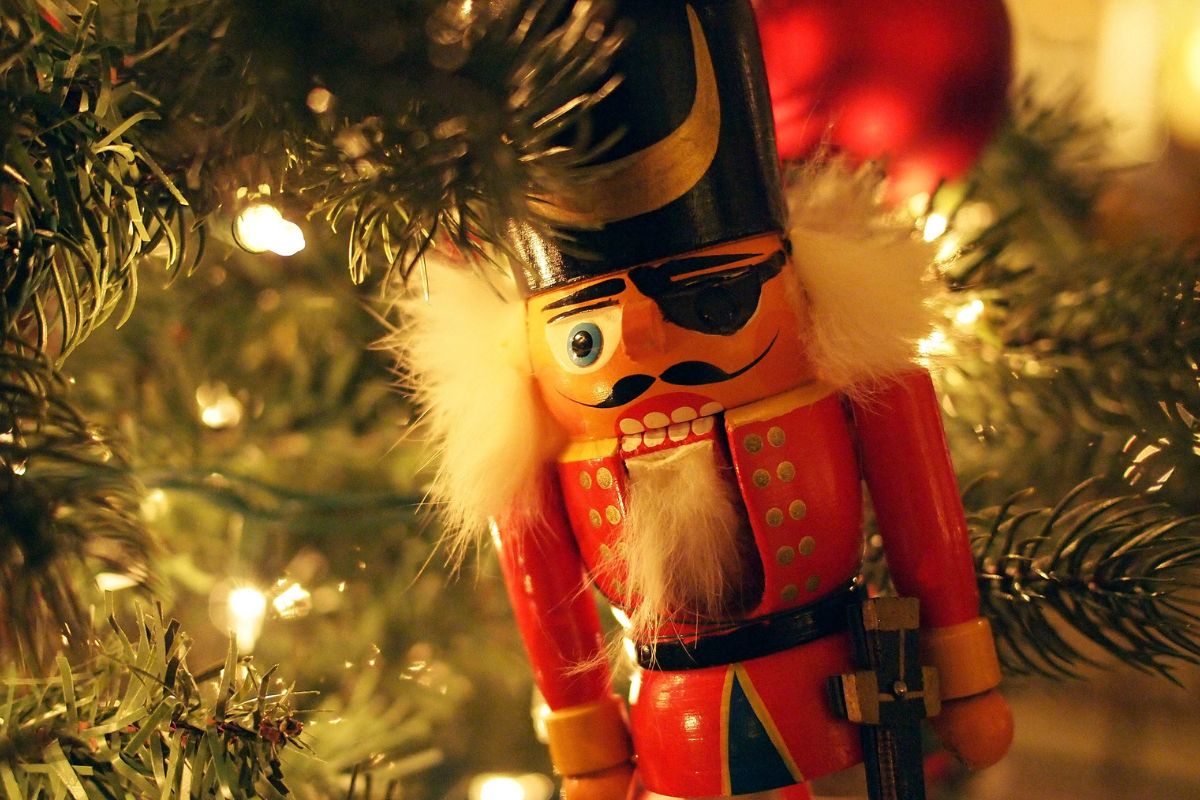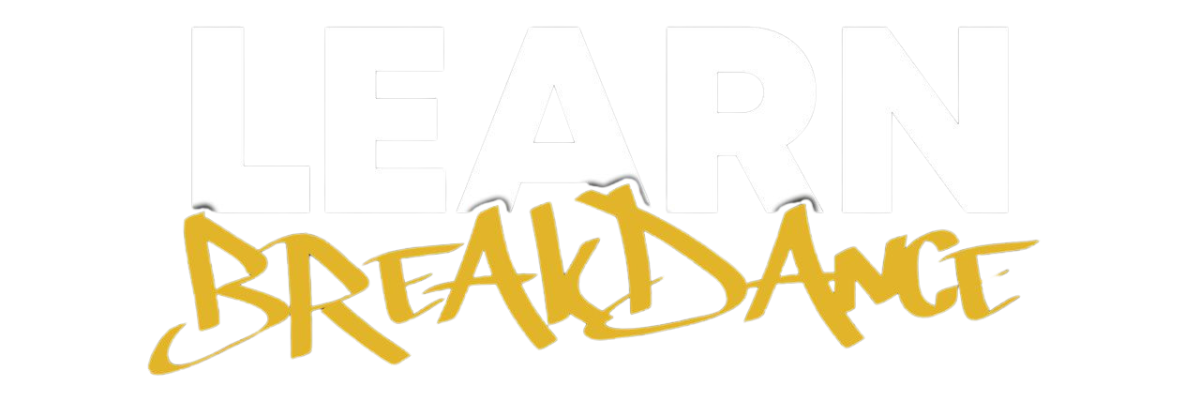Few pieces of classical music have achieved the universal recognition and lasting impact of The Nutcracker March from Pyotr Ilyich Tchaikovsky’s beloved ballet The Nutcracker. Since its debut in 1892, this lively and enchanting composition has transcended its original purpose, evolving into a musical emblem of holiday cheer and festive celebration. With its energetic rhythm, playful orchestration, and unmistakable melody, The Nutcracker March has embedded itself into popular culture, becoming a seasonal staple in films, commercials, and holiday performances worldwide.
But what is it about this piece that has allowed it to endure for more than a century? Beyond its association with the holiday season, The Nutcracker March possesses an irresistible charm that appeals to audiences of all ages and backgrounds. Its dynamic tempo and spirited instrumentation evoke a sense of wonder and movement, perfectly capturing the excitement of a grand holiday spectacle. The piece’s adaptability has also played a key role in its longevity, as it continues to be reimagined in new musical styles and mediums, ensuring its relevance in an ever-changing cultural landscape.
In this exploration of The Nutcracker March, we will delve into its historical origins, its far-reaching influence in modern media, and the psychological effects that contribute to its lasting appeal. More than just a musical interlude in a ballet, this composition has become a symbol of joy and festivity, cementing its place in the hearts of audiences across generations.
What is ballet? Ballet is a sophisticated and highly disciplined form of dance that combines movement, music, and storytelling to create a powerful artistic expression. Originating in the courts of Renaissance Italy during the 15th and 16th centuries, ballet was later refined and formalized in France under King Louis XIV, who played a crucial role in establishing it as a structured and prestigious art form. Over time, ballet evolved into various styles, including classical, neoclassical, and contemporary, each with its unique characteristics and artistic approaches.
At its core, ballet emphasizes grace, precision, and control. Dancers train extensively to achieve impeccable technique, often starting their education at a young age to develop the flexibility, strength, and discipline required for the art. Ballet movements are built on a foundation of five basic positions of the feet, which serve as the starting points for nearly all steps and poses. The use of turnout, where the legs rotate outward from the hips, is a distinctive characteristic that allows for greater extension and mobility.
Another essential element of ballet is its emphasis on posture and alignment. Dancers must maintain an elongated spine, lifted chest, and engaged core, which not only enhances their appearance on stage but also supports their ability to execute technically demanding movements. Footwork in ballet is often intricate and light, giving dancers an ethereal, floating quality. Pointe work, where dancers perform on the tips of their toes using specialized shoes, is a hallmark of classical ballet and requires years of rigorous training to master.
Ballet has evolved significantly over the centuries, giving rise to several distinct styles. Classical ballet is the most traditional and structured form, known for its elaborate costumes, detailed storytelling, and emphasis on precise technique. Famous classical ballets include Swan Lake, The Nutcracker, and Giselle. These productions often feature elaborate stage designs, full orchestral scores, and narrative-driven choreography.
In the 20th century, choreographers such as George Balanchine introduced neoclassical ballet, which stripped away some of the ornate storytelling elements in favor of pure movement and musicality. This style retains the technical rigor of classical ballet but allows for greater freedom of expression and abstraction. Balanchine’s works, such as Apollo and Jewels, exemplify this approach, focusing on speed, athleticism, and dynamic energy.
Contemporary ballet, on the other hand, blends ballet technique with influences from modern dance. Choreographers like William Forsythe and Jiří Kylián have pushed the boundaries of ballet by incorporating unconventional movements, fluid partnering, and innovative staging. This style often explores abstract themes and emotional depth, making it a compelling and ever-evolving form of artistic expression.
One of ballet’s most enduring qualities is its ability to tell stories without words. Through the use of expressive movements, gestures, and facial expressions, dancers convey emotions and narratives with remarkable clarity. This is particularly evident in classical story ballets, where characters experience love, loss, triumph, and transformation through movement alone.
In addition to traditional productions, ballet has also found a place in contemporary media and interdisciplinary collaborations. It has been featured in films, television, and even fashion, influencing visual aesthetics and inspiring new generations of artists. Major ballet companies worldwide continue to perform both classical and modern works, ensuring that ballet remains a relevant and evolving art form.
The Role of “March” in The Nutcracker
A Festive Beginning
The Nutcracker March appears early in the first act of The Nutcracker, serving as one of the first major musical moments that set the stage for the story’s unfolding magic. It follows the enchanting Mini Overture and Scene: The Christmas Tree, which musically depict the lighting and decorating of the grand Christmas tree at the Stahlbaum family’s holiday gathering.
As the scene transitions into a lively and joyous celebration, The Nutcracker March accompanies the bustling party atmosphere where elegantly dressed guests mingle, children excitedly receive gifts, and the warmth of the holiday spirit fills the air. The music mirrors the festive energy, with its playful and rhythmic quality emphasizing the excitement of the young guests. It is during this scene that the young heroine, Clara (or Marie, depending on the adaptation), is gifted the mysterious and charming Nutcracker doll by her godfather, the eccentric toymaker Drosselmeyer.
This moment is pivotal in the ballet, as it introduces the Nutcracker, who later becomes the catalyst for Clara’s fantastical adventure into the Land of Sweets. The bright, energetic rhythms of The Nutcracker March perfectly capture the excitement of a child’s Christmas Eve, making it a cherished and memorable moment for audiences of all ages.

Musical Characteristics
Composed in 4/4 time, The Nutcracker March follows the structure of a traditional military march, with a strong, rhythmic pulse driving its forward momentum. Tchaikovsky masterfully orchestrates the piece to bring out a sense of both order and exuberance, utilizing woodwinds and brass to carry the melody, while the strings provide a sprightly and buoyant accompaniment. The march’s tempo remains brisk and animated, ensuring that it conveys a sense of movement and anticipation.
One of the defining features of this composition is its balance between grandeur and playfulness. Tchaikovsky’s signature use of orchestration shines through as he skillfully combines delicate, twinkling melodies with powerful, resonant harmonies. This contrast mirrors the ballet’s thematic balance between the structured, refined world of the holiday party and the fantastical realm of the Nutcracker Prince’s kingdom.
Additionally, the piece incorporates dynamic shifts that reflect the lively and evolving nature of the scene it accompanies. From the gentle opening measures that invite the audience into the scene to the exuberant crescendos that capture the excitement of the party, The Nutcracker March is a testament to Tchaikovsky’s ability to paint vivid musical imagery.
The Cultural Impact of “The Nutcracker March”
A Holiday Tradition
For many families, attending a performance of The Nutcracker has become an essential holiday tradition, marking the arrival of the festive season. Within the ballet, The Nutcracker March serves as an early highlight that signals the start of an enchanting adventure. Its placement within the story and its joyous musicality make it one of the most memorable pieces in the entire ballet.
The piece’s cheerful and celebratory nature has endeared it to audiences worldwide, with many listeners associating it with nostalgia, childhood wonder, and the magic of Christmas. Over the decades, its uplifting melody has become ingrained in the collective cultural memory, instantly evoking images of Christmas trees, festive gatherings, and the excitement of the holiday season.
Appearances in Film and Television
Beyond the ballet stage, The Nutcracker March has made numerous appearances in film and television, further solidifying its place in popular culture. One of the most famous uses of The Nutcracker Suite (which includes March) is in Disney’s 1940 animated masterpiece, Fantasia. The film pairs Tchaikovsky’s music with whimsical animated sequences, bringing a new dimension to the beloved melodies and making them accessible to an even broader audience.
Additionally, countless holiday movies, commercials, and television specials have featured The Nutcracker March to evoke a sense of festivity. Whether in holiday-themed sitcom episodes, animated Christmas specials, or advertisements for seasonal products, the piece has become an unmistakable audio cue for the holiday season. Its instantly recognizable melody serves as a shortcut to holiday cheer, ensuring that it remains relevant in modern media.
Influence on Other Music and Media
The reach of The Nutcracker March extends beyond traditional performances. It has been reinterpreted and rearranged by various artists across multiple genres, demonstrating its adaptability and timeless appeal. Notable examples include Duke Ellington’s jazz-infused adaptation of The Nutcracker Suite, which adds a swing feel to the classical melodies, and the Trans-Siberian Orchestra’s rock-inspired renditions that bring a modern edge to Tchaikovsky’s compositions.
Even in contemporary entertainment, echoes of The Nutcracker March can be found in video game soundtracks, animated films, and modern orchestral compositions. Its motifs have been borrowed, sampled, and reimagined in a variety of artistic expressions, ensuring that Tchaikovsky’s work continues to inspire new generations of musicians and composers.
The Legacy of The Nutcracker and Its Music
Tchaikovsky’s Lasting Influence
Despite receiving mixed reviews upon its premiere in 1892, The Nutcracker has since grown to become one of the most performed and beloved ballets in history. Tchaikovsky’s masterful compositions, including The Nutcracker March, have played a significant role in its enduring success. His ability to craft melodies that are both elegant and accessible has ensured that The Nutcracker remains relevant and cherished more than a century after its debut.
The ballet’s music has demonstrated remarkable adaptability, seamlessly transitioning from the concert hall to the realms of film, television, and popular music. This versatility is a testament to Tchaikovsky’s genius and the timeless quality of his compositions.
Why “The Nutcracker March” Endures
The universal themes of joy, wonder, and festivity embedded within The Nutcracker March make it an evergreen piece of music. Whether performed in a grand concert hall, featured in a holiday special, or played in the background of a Christmas market, its melody continues to bring happiness to audiences worldwide.
Its ability to instantly transport listeners to a world of holiday cheer and childhood nostalgia ensures that it will remain a staple of holiday music for generations to come.
THE IMPORTANCE OF MUSIC IN THE NUTCRACKER’S SUCCESS
While The Nutcracker March is one of the most celebrated pieces from Tchaikovsky’s ballet, it is important to recognize how the entire musical score contributes to the ballet’s lasting appeal. Tchaikovsky’s ability to weave melodies that evoke wonder, excitement, and drama is a defining factor in The Nutcracker’s transformation from a relatively obscure ballet to a global phenomenon.
The ballet’s score, filled with sweeping waltzes, delicate adagios, and energetic dances, helps drive the narrative, immersing audiences in the magical world of Clara and the Nutcracker Prince. Without the enchanting and meticulously crafted music, the ballet’s whimsical storyline might not have resonated as deeply with audiences.
The Nutcracker March itself plays a critical role in drawing viewers into the unfolding holiday spectacle. It establishes an atmosphere of festive joy that serves as a stark contrast to the eerie transformation scene that follows, when the Nutcracker comes to life, the Christmas tree grows to an enormous size, and the battle against the Mouse King begins. Tchaikovsky’s genius lies in his ability to compose music that perfectly captures the shifting emotions of the story—whether it be the excitement of a Christmas party, the suspense of a battle, or the ethereal beauty of the Land of Sweets.
THE EVOLUTION OF “THE NUTCRACKER MARCH” IN PERFORMANCE
Over the years, interpretations of The Nutcracker March have evolved, reflecting changes in musical performance and audience expectations. Early productions of The Nutcracker adhered closely to the original choreography by Marius Petipa and Lev Ivanov, with orchestras performing the score in a manner that emphasized its classical precision.
However, as ballet companies and conductors sought to put their unique stamp on the production, interpretations of the music began to vary. Some orchestras emphasize the march’s military-like structure, bringing out its rhythmic sharpness and bold brass elements, while others highlight its playful and buoyant qualities by softening its dynamic contrasts.
Additionally, modern adaptations of The Nutcracker in various cultural settings have led to creative reimaginings of The Nutcracker March. Some productions incorporate contemporary dance elements, modify the orchestration to include modern instrumentation, or even infuse the piece with jazz and rock influences. These adaptations demonstrate the piece’s remarkable flexibility and its ability to connect with audiences across different musical tastes and traditions.
EDUCATIONAL AND CULTURAL IMPACT
Beyond its role in ballet and holiday celebrations, The Nutcracker March has also found a place in educational settings. Music educators often use it as an introductory piece to teach students about orchestration, rhythm, and classical composition. Its clear, structured form makes it an excellent example for studying musical themes, repetition, and instrumentation.
Moreover, The Nutcracker March serves as a gateway for younger audiences to engage with classical music. Many children’s first exposure to orchestral music comes through The Nutcracker, making it a crucial work in fostering an appreciation for the arts. Whether through school concerts, youth orchestras, or animated adaptations, this piece has played an instrumental role in keeping classical music relevant for new generations.

THE NUTCRACKER MARCH IN MODERN MEDIA AND POP CULTURE
While The Nutcracker March was originally composed for the ballet, its influence has extended far beyond the stage. Today, the piece is instantly recognizable in film, television, commercials, and even video games. This widespread use has helped solidify its status as one of the most iconic pieces of classical music ever composed.
In holiday films, The Nutcracker March is often used to evoke a sense of festive nostalgia. From classic animated specials to modern holiday comedies, the melody serves as an auditory cue that transports audiences to a world of winter magic. The piece’s bright orchestration and playful rhythm make it an ideal background for scenes depicting bustling Christmas markets, children unwrapping gifts, or whimsical holiday adventures.
Television commercials also frequently incorporate The Nutcracker March to create an instant association with the holiday season. Whether promoting department stores, festive beverages, or winter sales events, companies rely on the piece’s universal recognition to captivate audiences and enhance their holiday messaging.
In the gaming industry, The Nutcracker March has appeared in rhythm-based games and winter-themed levels, where its lively tempo complements fast-paced gameplay. The piece’s structured yet dynamic energy makes it an excellent fit for interactive experiences, reinforcing its adaptability across different forms of entertainment.
PSYCHOLOGICAL IMPACT OF THE MUSIC
One of the reasons The Nutcracker March remains so compelling is its psychological effect on listeners. The piece’s lively tempo and crisp rhythms create an uplifting and energetic mood, making it an effective tool for eliciting joy and excitement.
Music psychologists suggest that the march’s major key, syncopated rhythms, and balanced phrasing contribute to its positive emotional impact. The bright brass and woodwind sections, combined with the steady pulse of the percussion, evoke feelings of movement and anticipation. This is why the piece is so frequently associated with scenes of discovery, adventure, and festive celebration.
Interestingly, studies have shown that classical music, particularly compositions with strong rhythmic structures like The Nutcracker March, can enhance cognitive function and increase focus. This has led to its inclusion in holiday playlists designed to improve productivity and create an enjoyable atmosphere in workplaces and retail environments.
THE FUTURE OF THE NUTCRACKER MARCH
Despite being over a century old, The Nutcracker March continues to evolve with the times. New arrangements, remixes, and reinterpretations by contemporary musicians keep the piece fresh and engaging for modern audiences. From jazz renditions to electronic adaptations, the melody has been reimagined in countless ways while maintaining its original charm.
As technology advances, we may see The Nutcracker March integrated into virtual reality experiences, interactive holiday events, and AI-generated music compositions. Given its lasting appeal, it is likely that the piece will continue to be a cultural touchstone for many generations to come.
Ultimately, The Nutcracker March is more than just a piece of music—it is a timeless celebration of joy, movement, and holiday spirit. Whether performed by a full symphony orchestra or remixed into a modern soundtrack, its legacy as one of the most beloved classical compositions remains unshaken.
Conclusion
The enduring legacy of The Nutcracker March is a testament to the timeless power of music to captivate, inspire, and bring people together. More than a simple composition, it has become a cultural phenomenon, bridging the past and present through its continued presence in holiday traditions, media, and contemporary adaptations. Whether played by a grand orchestra in a traditional ballet performance, remixed into a modern arrangement, or subtly woven into the background of a festive commercial, its charm remains undiminished.
The reasons behind its lasting success are multifaceted. Its bright orchestration, rhythmic energy, and festive spirit make it instantly recognizable and deeply evocative. Its role in The Nutcracker ballet provides a nostalgic connection to one of the most celebrated holiday productions in history, while its adaptability allows it to thrive in new and unexpected contexts. Additionally, the psychological impact of its uplifting melody ensures that it continues to bring joy and excitement to listeners of all generations.
As we look to the future, The Nutcracker March will likely continue evolving, finding new expressions in digital media, interactive experiences, and innovative musical interpretations. Yet, no matter how it is presented, its essence will remain unchanged—a joyful, spirited celebration of movement, magic, and holiday delight. In a world that is constantly shifting, The Nutcracker March stands as a musical constant, reminding us of the power of melody to create timeless memories and shared traditions.


Leave a reply